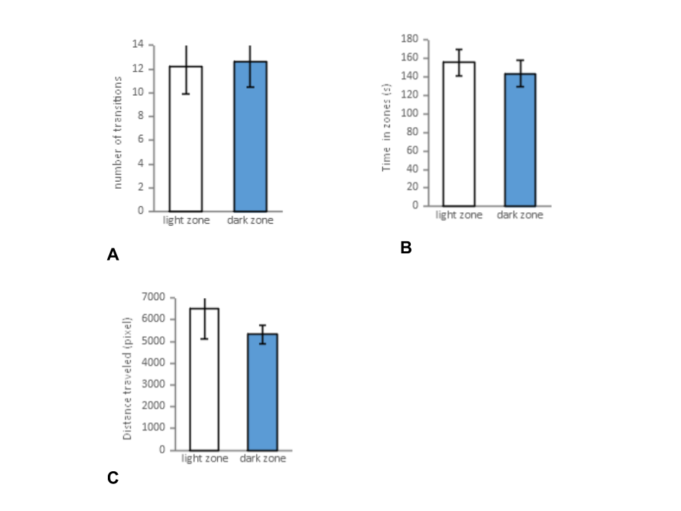This s a widely used protocol for measuring anxiety-like behaviour. The test is based on the natural exploratory behaviour of rodents to new environments and their aversion to brightly illuminated areas.
Video of a mouse in the LT unit during a light / dark transition test
Experimental set up
The Zantiks LT unit is used to create a light-dark box environment. The cage is divided into one small (one third) 'dark' compartment and one large (two thirds) illuminated 'light' compartment using a dividing insert and a black lid. The dividing insert has a 50 mm radius semi-circle hole located centrally at the bottom to provide the mouse with the option to move between the two compartments.
The lit compartment is illuminated from the overhead light located above the cage as well as the screen under the cage. There is no light underneath the dark compartment and the black lid covers this area preventing the top light from entering the dark compartment.
Experimental procedure
- Transfer the mouse from its home cage to the testing room. It is recommended to wait 30 minutes before the experiment to habituate to the new environment.
- Put the mouse in the lit compartment of the cage.
- Place the cage inside the system in a way that the dark compartment locates at the back.
- Let the mouse move freely between the two compartments for 5 minutes (Costall et al., 1989; Serchov et al., 2016) or 10 minutes (Takao & Miyakawa, 2006).
Results/data output
The Zantiks LT system can provide you with a .csv file containing the results for:
- The time spent in the lit/dark compartments
- The distance travelled in the both compartments
- The number of transitions between them
The figure below shows the results for 5 mice in LDT test using the Zantiks LT unit.
Overall, they show normal exploratory behaviour and do not show bias towards any of the light and dark compartments as indicated by A) number of transitions between compartments, B) time spent in each compartment and C) Distance travelled (pixels) within each compartment.
Data courtesy of Dr. Wei Ba, Department of Life Sciences, Imperial College London




